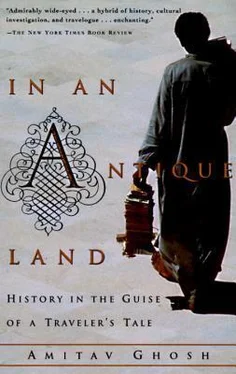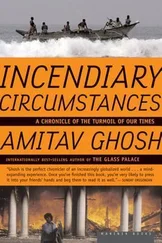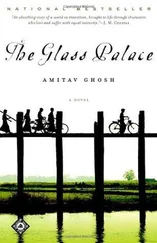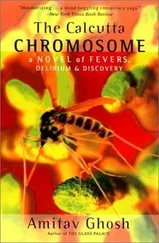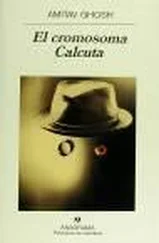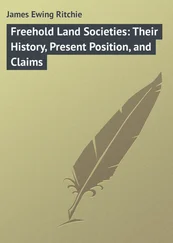16 It is known to have had two entrances:See S. D. Goitein’s ‘The Sexual Mores of the Common People’, p. 47 (in Society and the Sexes in Medieval Islam , ed. A. L. al-Sayyid Marsot, Udena Publications, Malibu, 1979); and Vol. II of his Mediterranean Society , pp. 143–52.
17 For the Synagogue … the influx of migrants:Cf. S. D. Goitein, ‘Changes in the Middle East (950–1150)’, p. 25; and ‘Mediterranean Trade in the Eleventh Century: Some Facts and Problems’, p. 61, (in Studies in the Economic History of the Middle East , ed. M. A. Cook, Oxford University Press, London, 1970).
18 The North Africans … affinity for the flourishing trade:Jews and Muslims in North Africa and the Middle East may have turned increasingly to the India Trade after the tenth century because they had been squeezed out of the Mediterranean trade by the Christian states of the northern coast. (See, for example, S. D. Goitein’s article ‘Portrait of a Medieval India Trader; Three Letters from the Cairo Geniza’, p. 449, Bulletin of the School of Oriental and African Studies , Vol. 50, part 3, 1987). After the twelfth century Jewish merchants appear to have been gradually pushed out of the eastern trade by the Muslim association of Kârimî merchants. (Cf. W. J. Fischel, ‘The Spice Trade in Mamluk Egypt’, pp. 166–7, Journal of the Economic and Social History of the Orient , Vol. I, part 2, E. J. Brill, London, 1958.)
19 The vast majority … were traders:See S. D. Goitein, Studies in Islamic History and Institutions , pp. 277–8 (Leiden, Brill, 1966). As Goitein points out elsewhere, the upper crust of the Jewish community in Fustat was formed largely by the members of the ‘Iraqi’ and Karaite congregations, not by the ‘Palestinians’: ‘as a rule it was the middle and lower middle classes and not the economically and socially highest layer of Jewish society which have left us their day to day writings in the Geniza.’ (‘Changes in the Middle East [950–1150]’ p. 18.) See also Goitein’s article ‘The Sexual Mores of the Common People’, p. 50.
20 Their doctors … studied Hippocrates:Cf. S. D. Goitein, A Mediterranean Society , Vol. II, p. 249
21 The chambers … known by the term ‘Geniza’:Cf. S. D. Goitein, A Mediterranean Society , Vol. I, p. 1.
22 The Geniza … was added:For the date of the construction of the Ben Ezra Geniza see S. D. Goitein, A Mediterranean Society , Vol. I, p. 18. On 31 December 1011, a Jewish funeral procession was attacked by Muslims, and twenty-three people were taken captive and threatened with death. They were saved at the last moment by the personal intervention of the Caliph. Goitein has suggested that this incident may have had a direct connection with the addition of the Geniza at the time of the synagogue’s reconstruction in 1025. ‘Recalling the terrifying events of December 1011, they must have mused: Corpses must be removed from the city notwithstanding the constant menace by the rabble. But why take the same risk with papers? Let’s have a place in the synagogue roomy enough for storing discarded writings now and for ever. The idea was materialized and the result was the Cairo Geniza.’ (‘Urban Housing in Fatimid and Ayyubid Times’, p. 6.) The Geniza does however contain several documents that predate the rebuilding of the Synagogue of Ben Ezra in the eleventh century. (See Simon Hopkins’s article ‘The Oldest Dated Document in the Geniza’, in Studies in Judaism and Islam , ed. Shelomo Morag et al., Hebrew University, Jerusalem, 1981.)
23 for some reason … was never cleared out:The recent research of Mark R. Cohen and Yedida K. Stillman suggests that the practice of discarding manuscripts in a chamber within a synagogue and leaving them there permanently was common among Middle Eastern Jews well into this century. See their article ‘The Cairo Geniza and the Custom of Geniza among Oriental Jewry: An Historical and Ethnographic Study’, in the Hebrew journal Pe’amin (No. 24, 1985).
24 The document … thought to be the last:See S. D. Goitein, A Mediterranean Society , Vol. I, p. 9.
25 From the late seventeenth century … Egyptomania:See Erik Iversen’s The Myth of Egypt and its Hieroglyphs in European Tradition , pp 88–123, (Geo Gad Publishers, Copenhagen, 1961).
26 Concurrent with this … travellers undertook journeys:Cf. Eric Iversen, The Myth of Egypt , pp 108–110.
27 It was … the first report:The Italian traveller, Obadiah of Be(a)artinoro had described the Synagogue of Ben Ezra in a letter to his father in 1488, but the Geniza does not figure in his account (Cf. Simon Hopkins, ‘The Discovery of the Cairo Geniza’, pp 144–6, Bibliophilia Africana IV, ed. C. Pama, Cape Town, 1981).
28 The visit appears … unremarkable:Cf. Norman Bentwich, Solomon Schechter; A Biography , p. 139, (Cambridge Univ. Press, Cambridge, 1938), and Simon Hopkins, ‘The Discovery …’, p. 147.
29 In fact … Karl Leibniz:See Erik Iversen’s The Myth of Egypt , p. 125.
30 ‘Can a man risk’:Simon Hopkins, ‘The Discovery …’, p. 149.
31 ‘But who knows’:ibid., p. 150.
32 The German scholar:Paul Kahle, The Cairo Geniza , pp. 2–3, (Oxford University Press, London, 1947).
33 He had obtained … documents:Paul Kahle, for example, met Samaritan priests in Palestine who complained bitterly of how Firkowitch had swindled them of their manuscripts, paying them next to nothing ( The Cairo Geniza , p. 4).
34 ‘It is not often’:Elkan N. Adler, ‘Notes of a Journey to the East’, p. 6 ( Jewish Chronicle, 7 December 1888).
35 The Cattaouis:See Gudrun Krämer’s account of the history of the Cattaouis in The Jews in Modern Egypt, 1914–1952 , pp. 88–98 (University of Washington Press, Seattle, 1989).
36 By this time the indigenous Jews of Cairo:Marion Woolfson, Prophets in Babylon; Jews in the Arab World , p. 102 (Faber and Faber, London 1980); and Gudrun Krämer and Alfred Morabia: ‘Face à la Modernité: Les Juifs d’Egypte aux XIXe et XXe siècles’, pp. 84–5, (in Jacques Hassoun ed. Juifs du Nil , Le Sycomore, Paris, 1981).
37 Soon afterwards the British ambassador:The Earl of Cromer, Modern Egypt , Vol. I, p. 336–41, (Macmillan, London, 1908).
38 The Cattaouis … mansion:Elkan N. Adler, ‘Notes’, p. 6.
39 The Bodleian Library … two members of its staff:They were A. Cowley and A. Neubauer. Both Cowley and Neubauer were greatly excited by the newly discovered fragments and were desperately eager to lay their hands on more, but curiously enough, even as late as 1896 they do not appear to have had any idea of where the documents were coming from. (See A. Neubauer’s article, ‘Egyptian Fragments’, Jewish Quarterly Review , pp. 541–561, Vol. VIII, 1895–6; and A. Cowley’s article in the same issue, ‘Some Remarks on Samaritan Literature and Religion’, pp. 562–575. See also Mark R. Cohen’s Jewish Self-Government in Medieval Egypt , p. 11, Princeton, 1980).
40 He took with him letters … the Cattaoui familyE. N. Adler, ‘An Eleventh Century Introduction to the Hebrew Bible’ ( Jewish Quarterly Review , p. 673, Vol. IX, pp. 669–716, Macmillan, London, 1896–7).
Читать дальше
